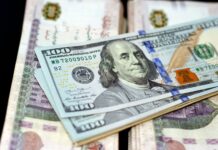In an expected move, the Egyptian Public Prosecution announced the closure of the mysterious death case of researcher and economic expert Ayman Hadhoud inside the Abbasiya Mental Health Hospital after his arrest, claiming that “there is no criminal suspicion in the death” and that his death was the result of a “chronic heart condition.” With this decision, the Public Prosecution continues to conspire to close Hadhoud’s case without revealing the truth of what happened to him and the violations he was subjected to, which are believed to be the leading cause of his death. It also continues to ignore the severe evidence and logical questions that have emerged in the case so far.
Torture evidence
In its statement, the Egyptian Public Prosecution claimed that Hadhoud’s body was free of any traces of injury that indicate the occurrence of criminal violence or resistance” to demonstrate that his death was natural, but this contradicts much evidence of the presence of traces of torture on his body. In an investigation into Hadhoud’s Death, Amnesty International revealed that, based on an examination of official records, interviews with witnesses and sources, as well as an analysis of independent forensic experts who examined the leaked photographs of Ayman’s body, it is strongly likely that he was tortured or ill-treated shortly before his death.
Derrick Pounder, the independent forensic specialist hired by Amnesty International to examine the photographs of Hadhoud’s corpse after the autopsy, said that the pictures showed marks on his forearms and the left side of his face, which strongly indicates that he had sustained numerous injuries before his death. He explained that these signs cannot be explained by the natural processes that occur when bodies decompose, and they are “wounds.” Pounder added that the distribution of these marks ” tends to indicate systematic and repeated acts inflicted [on a person] alive, in other words, ill-treatment/acts of torture”, most likely caused by burns rather than beatings. Pounder also noted the difference between the scars from the autopsy and his injuries before his death.
Pounder’s analysis is consistent with the statements of Omar Hadhoud, Ayman’s brother, that he saw a fracture in his brother’s skull before his autopsy and that when he tried to photograph the body, hospital security forced him to erase the photos. The request for family members to attend the autopsy was also refused, even though this is their right.
Al-Manassa‘s website revealed the last hours of Ayman’s life before his death, pointing out he had undergone an incomprehensible deterioration in his health in the last days of his life, which included weakness in the degree of consciousness, a temperature rise, a drop in blood pressure and difficulty breathing. It is shown to a specialized doctor, or medical examinations are carried out for him. And a specialist internal consultant suggested that the cause of this case was “the presence of pressure on the respiratory centre in the brain, which means that this patient was beaten on his brain, causing him to have a blood pool or bleeding in the brain, which led to a drop in blood pressure and delirium or confusion that he suffered.” Among them is Ayman in his late days.
The account that Ayman was tortured before his transfer to Al-Abbasiya supports what more than one source in the hospital said that Hadhoud did not undergo an internal examination when he was admitted to the hospital, as stipulated in the protocol for the detention of patients in psychiatric hospitals, by order of the hospital director known for his relations with the security forces. Perhaps he was not subjected to an examination because of the fear that who would record his injuries in an official report.
Questions the prosecution deliberately ignores
The Public Prosecution says that Hadhoud was arrested in the Zamalek neighbourhood while trying to break into an apartment while he was mentally disturbed. And if we know that every meter in Cairo’s communities, especially the high-end ones, is monitored by cameras, whether who must have recorded those belonging to the police or those of shops and residences, then Ayman’s incident in audio and video. Where are the recordings? If we accept the integrity of the prosecution’s version of the Zamalek incident, Hadoud is supposed to be transferred to the Qasr al-Nil police station, which falls within the Zamalek district. Still, the reality is that the researcher’s family received a summons from the National Security Sector in the Amiriya Police Department days after Ayman’s arrest. One of his brothers was interrogated about his activities and writings, promising to release him within days. Why did Ayman go to the Amiriya police station instead of the Qasr al-Nil police station? And why was he in the custody of National Security rather than the Criminal Police (given his alleged crime)? What is the number of the seizure report that recorded the incident?
The Public Prosecution says that Hadhoud was arrested legally on February 6, so why then did the Public Security and the Public Prosecution office officially deny his family his presence or accuse him of any crime? And why, when the family learned – through their acquaintances – that Ayman was being held in the Abbasid mental hospital and went to request an official permit from the prosecution to visit him, the prosecutor said that Hadhoud was not accused in any case and, therefore he cannot grant the family permission to stay? The prosecution says that Ayman died on March 6 and that it fulfilled its duty to inform his family of the death as stipulated by law. Still, it ignores that it officially announced the death family on April 9, 35 days after the end, while the law stipulates that reporting should be within 24 hours of death? Why all this illogical delay? And why was Ayman’s body kept in the mortuary at Abbasiya Hospital, even though it was a refrigeration unit and not a freezer, which caused changes in the body? More importantly, why did the prosecution first order that Hadhoud is buried in charity cemeteries as anonymous when it had all his data from the start? And why, when the family discovered the matter, who modified the burial permit?
The prosecution says that it examined Ayman’s body after his death and found that it was free of any injuries. The health inspector confirmed that there was no criminal suspicion in the end, which is the same thing his brothers said (according to the prosecution), so we have a consensus that there is no criminal suspicion in the death, so why was the autopsy done? According to the prosecution, no one requested this, while family members say that they told the prosecution that Ayman was detained by the National Security and ordered an autopsy. If Ayman’s Death was natural, what does the prosecution say about the considerable evidence listed above that indicates that Hadhoud was tortured or assaulted during the period of his enforced disappearance?
All these questions, which the prosecution ignored, confirm that there was a conspiracy in the case to close and that the Sisi regime is trying to pick up the topic, which angered public opinion for its crudeness, even if it presents such an illogical account of the death of a young researcher whose fault is that he is an Egyptian citizen.









